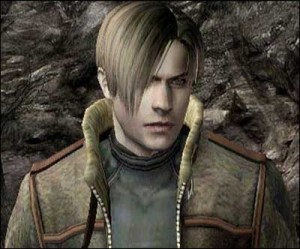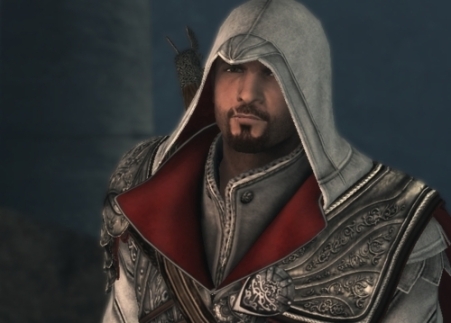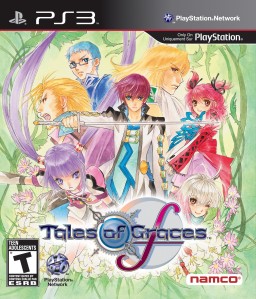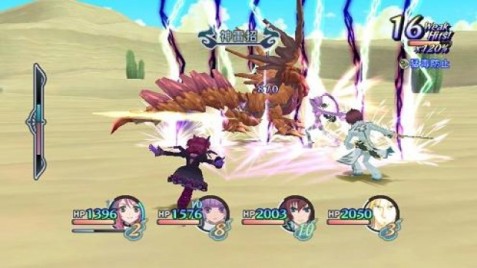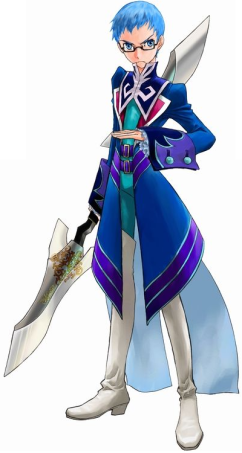Finally, we have reached the entry for my #1 Final Fantasy character of all time. This list has been an absolute blast to write, and I am truly sad that this is the last time I will be writing about Final Fantasy characters for awhile.
I know that my opinions are very unpopular, but as I have stated before, I’m not trying to be objective. These characters are the ones who mean the most to me; nothing more, nothing less. I know that no one is going to agree with me, and that’s completely fine. I’m not going to bash anyone for liking any character in particular, and I would hope that anyone reading this (lol no one is reading this) would be mature enough to give me the same amount of respect.
Making this list was not an easy task. I was constantly questioning my placements of each character. There are even some points where I intended for a character to be in one spot, but then had to change it after writing my entries for each of them. For example, I originally intended for Auron to be #2, but after writing my entry for Zack, I couldn’t help but switch them around.
When I was writing these entries, I would first begin by refreshing my memory about each character by reading their Final Fantasy Wiki articles (hence all of the images I use from there). Also, I tried to watch notable scenes of theirs on Youtube, as well as listen to their personal theme songs (if they had them). This also contributed to a lot of shifts on the list, such as the aforementioned Zack-Auron switch, as well as shifts between Jecht, Noel and Balthier.
Despite these difficulties, my #1 spot was never in doubt. In fact, I don’t even need to do the things mentioned above to refresh my memory on why this character is so great (but I did anyway to steal some pictures ;D). This character’s actions and personality are so heavily engraved in my mind that I will never be able to forget them.
In my opinion, a character’s ability to appear both realistic and unrealistic simultaneously is what makes them great. By definition, a hero (or a villain) should have something that normal people don’t; something that makes them greater than human. How effectively we, as gamers, are able to identify with a character, despite the unrealistic circumstances they are often placed in, is what makes them memorable. I can’t identify with characters like Lightning and Sephiroth, because their behavior is so damn irrational and unbefitting of an actual person. While I think this irrational behavior can be amusing in some cases (most notably Kefka’s), it more than often leads to an unlikeable and unrealistic character.
Almost every Final Fantasy protagonist develops in the exact same way: they start off with a major character flaw that needs to be fixed by the supporting cast until they can realize their full potential. These flaws are split up into three different categories with three characters falling into each one:
- Cecil, Terra, and Cloud all have trouble showing their emotions due to their tragic pasts
- Squall, Zidane, and Lightning refuse to rely on anyone but themselves
- Bartz, Tidus, and Vaan are all immature and weak-willed
As each character develops, they begin to discover that their previous ways of living were unsatisfactory, and they transform into new people with brand new mindsets. After this transformation occurs, they gain the motivation needed to defeat their corresponding nemeses and save the world. While this “flawed protagonist” tradition does allow for some good development to occur, it get’s old after awhile. I do have a character from each category (Cloud, Squall, and Tidus) on my list, so I do like the way some of these characters develop. That being said, it’s the ones who deviate from this formula that stand out to me.
That leaves three remaining Final Fantasy protagonists who do not fall into any of the three categories. One of them is Yuna from Final Fantasy X-2. While I do find Yuna to be an entertaining character, I did not put her on this list because her personality in FFX-2 completely contradicts her personality from FFX. She turns into a completely different character with little to no explanation why, which completely soils her credibility as a character. The second unique protagonist is Zack Fair, who I have already included on my list at the #2 spot. His personality deviates from the formula, which makes him one of the most endearing and intriguing characters in the Final Fantasy series. However, there is one more Final Fantasy protagonist who also goes against the grain; a character who’s actions, personality, and level of realism exceed that of all others. That character is none other than…
#1 – Serah Farron

I honestly don’t know where to begin. There are so many things I can say about why Serah is an outstanding character that I’m a bit overwhelmed. Serah is unlike any protagonist I have ever encountered before. After playing hundreds of story and character driven games from different franchises such as Final Fantasy, Tales, Metal Gear Solid, Ace Attorney, and even more, I can safely say that Searh Farron is one of the most realistic, endering and relatable protagonists I’ve ever seen.
Backstory
Like many characters in the Final Fantasy series, Serah is burdened by a very sad and tragic past. Her father died when she was still a baby, and her mother died when she was only twelve years old, leaving only her sister Lightning for her to rely upon. In Final Fantasy XIII, Serah is tricked into becoming a l’cie against her will, effectively ending any chance she has at finding happiness. While Lightning, Snow, and a little divine intervention are able to free her from this fate, it doesn’t take long for Serah’s life to take another turn for the worse. Lightning disappears, and her dopey fiancee Snow goes off on a year-long journey to find her. Serah has essentially lost every single person she ever knew and loved, which makes her story, in my opinion, the saddest and most heartbreaking of any Final Fantasy character.
But what makes Serah’s story so endearing is that despite all of these horrible things that have happened to her, she doesn’t let them ruin her life. She’s the one Final Fantasy protagonist who actually has a good reason to be depressed, but isn’t. The kind of things that turned the mighty Cloud Strife into a blubbering mental patient turns Serah into the wisest and most mature character in the Final Fantasy series. While she does show momentary signs of weakness, like any normal person would if they were in her situation, she is still able to give meaning to her own life. Although all of these horrible things have happened to her, Serah never loses her strong and caring personality, or her optimistic nature.
With Lightning and Snow missing, Serah makes the most out of her life as a grade school teacher in New Bodhum. Then, Noel Kreiss shows up on Lightning’s behalf, and drags Serah into a very dangerous journey to prevent the world’s destruction. Without hesitation, Serah is willing to put her life on the line to protect the world; the same world that has done nothing but horrible things to her and those she loves.
Personality
The way Serah functions as a protagonist in Final Fantasy XIII-2 is absolutely fascinating. Most JRPG protagonists develop their ideals and personalities as their journey goes on. They learn from their experiences, and then change their actions to accommodate what they have learned. However, Serah’s ideals are firmly in place at the beginning of the game, and there is no need for them to change as her story goes on. Instead, she uses her morals and her ideals in order to help other characters in the game develop. Her steady and consistent personality improves the quality of the characters surrounding her, because her admirable traits make other characters want to be like her. She serves as a motivator for Hope, and gives him the confidence he needs to do something important and valuable. She makes Noel a better character, because her optimistic nature pushes him forward and prevents him from giving up. And finally, the reversal of roles between Serah and Lightning make Lightning appear, to me at least, a hell of a lot more likeable and human than she was in Final Fantasy XIII. Serah’s established mindset, maturity, and willpower serve as the catalyst for everything that happens in Final Fantasy XIII-2, which is how a protagonist should function.
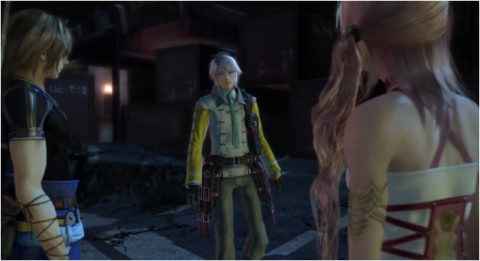
With Serah’s help, Hope transforms from the whiny, useless mess he was in FFXIII into a very likeable character in FFXIII-2
Another thing I love about Serah is the fact that her personality allows for some very funny things to happen. Final Fantasy games are rather serious in nature, so the momentary glimpse of humor can really help ease the tension. The Live Trigger system in FFXIII-2 puts us in control of what Serah says, which can lead to some hilarious results. There’s one point in particular where Noel asks Serah who Snow is. One of the options results in Serah going on a minute-long rant in a highly pitched and sped up chipmunk voice explaining why Snow is “oh-so-cool-and-handsome-and-perfect-and-heroic-and-strong-ohmigosh-idkmybffjill!” Another scene shows Serah putting on the “Meanie Miss Farron” persona she has acquired as a grade school teacher as she scolds a group of young flan monsters. The monsters stare at her in fear, while Noel looks on in disbelief that Serah’s scolding actually worked. In my opinion, it’s the lack of these kind of moments that made Final Fantasy XIII so unappealing. Everyone in FFXIII was so high strung and serious that it made them appear as nothing more than unlikeable assholes. It’s these kind of charming little moments that bring out a character’s humanity; something that Serah has in spades.

“Meanie Miss Farron” layin’ down the LAW!
Development
While her ideals and morals don’t really change as the story goes on, Serah still undergoes quite a bit of development. When we first see Serah, she’s pretty much the same mousy little girl that she was in Final Fantasy XIII. She can’t hold her own in a fight, and must be rescued by Noel the first time a monster gets anywhere near her. But as the story goes on, we see Serah transform from a puny little girl into a very strong and capable fighter.
Since pretty much every other Final Fantasy protagonist (sans Tidus and Vaan) have some sort of battle experience that makes them incredibly strong, it’s refreshing to finally see someone who doesn’t. This makes Serah that much more relatable: when we start playing a video game, we have little to no knowledge of it’s mechanics. As we continue to play, we begin to learn and master all of the game’s intricacies, which results in us becoming better at the game. Serah undergoes this process along with us: she starts off as a beginner, and develops into a much stronger fighter as her journey unfolds. This is the same reason I enjoy characters like Luke fon Fabre, Ezio Auditore, and Phoenix Wright. It’s this type of player-character connection that no other Final Fantasy protagonist but Serah can offer, which is one of the many reasons why she is my favorite Final Fantasy character of all time.

As the story goes on, we see Serah transform from Lightning’s little sissy into a fighter on par with the others
Serah’s motivations as a protagonist also start off a little bit shaky, but begin to clear up as she learns more about what is going on. She starts her journey with hopes of reuniting with Lightning and Snow, while Noel appears to have the bigger picture in mind. While her motivations may appear to be somewhat petty on the surface, they are exactly the same motivations we have at the beginning of the game. Like Serah, we are in the dark about what is truly going on, but we still have some sort of attachment to Snow and Lightning having played the previous game. However, as we, and Serah find out about what’s actually happening, our motivations change. Serah learns about the threat that Caius poses, and thus changes her motivations to accommodate the new information she takes in as the journey unfolds. The journey becomes less about saving Lightning, and more about saving the world from Caius.
One moment in particular shows just how strong of a character Serah becomes. Near the end of Final Fantasy XIII-2, Caius “tests” Serah and Noel by offering them the chance to live in their own “ideal worlds.” In Serah’s ideal world, she is living peacefully with Snow, Lightning, and the other members of Nora on the beaches of New Bodhum. Everything she wants is there, and all she has to do is give in to the fake Lightning in order to live peacefully in her ideal world forever. However, Serah passes the test, and understands that living in this world would be selfish, and would result in the loss of countless lives. She rejects her paradise for the greater good, which is something she likely wouldn’t have been able to do at the beginning of the game.
Noel, on the other hand, gives in to Caius’ illusion, and fails the test. It is then up to Serah to go pull him out of his dream. Noel, who appears to be stronger than Serah in pretty much every way imaginable, is unable to do what she did. While I don’t necessarily dislike Noel for not being able to resist Caius’ temptation, looking at his failure as compared to Serah’s success goes to show how strong of a character she has become.

Having failed Caius’ test, presumably strong Noel must be saved by presumably weak Serah
The Ending of Final Fantasy XIII-2
Like the seeress Yeul, Serah has the ability to see the timeline. During her journey, Serah discovers that the visions she has been having are slowly sapping away her life force. She finds out that unless she stops trying to save the world through fixing the timeline, she will inevitably die. Caius constantly reminds Serah of this fact in hopes of trying to scare her away from completing her mission. But how does Serah respond to Caius’ reminder that what she is doing will kill her?


Knowing full well that she isn’t going to be around to see the future that she fought so hard to protect, Serah is still willing to do anything to save it. Now this kind of attitude is the mark of a true hero. Serah knows that if she carries on, she will never see Lightning, Snow, and Noel ever again. But not once does she even begin to consider ending her journey. It is at this moment that we see Serah’s development as a character come full circle. She begins with somewhat petty motivations, but ends her journey willing to do anything she can to save the world.
But surely there must be some sort of loophole that will allow Serah to live. There’s no way in hell that they would kill off the game’s lead character, right? Right?

You’ve gotta be kiddin’ me…
After their final confrontation with Caius, Serah and Noel return to the year 500 AF. Serah is forced to witness one more vision: a vision that destroys the last bit of life that she has left.
The final scene of Final Fantasy XIII-2 is one of the strangest moments I have ever experienced in a video game. Even though Serah’s death was heavily foreshadowed, I was still confident that they would be able to find some sort of silly loophole that would allow for her to live. But they didn’t. When Serah died, I was absolutely floored. Serah is not the kind of character who usually dies in a JRPG.
Despite the horribly unfitting music playing in the background, Serah’s death is one of the most heartbreaking scenes I have ever seen. And yeah, I’m not afraid to admit that I cried, just as I did during Zack’s death scene. The scene itself isn’t particularly well done, but the development of Serah as a character is what makes it so emotional. After all of the horrible things that have happened to her throughout the course of the two games, no other character deserves happiness as much as Serah does. The fact that such an optimistic, caring, and sweet character such as Serah meets this kind of fate is down right tragic.
And then, things just go to shit. It turns out that Caius wanted Serah and Noel to kill him all along. Chaos is unleashed upon the world, Serah is dead, Lightning is crystallized for some reason, and Caius achieves everything he wanted.
I have never felt such a strange mix of emotions from a game’s ending. I went from being sad to angry in the matter of seconds. When the words “To be continued” appeared on my screen, I was stunned. Why the hell did I even play this game? What did we accomplish? Was Serah’s death in vain? Why the hell is Lightning a big crystal? Are Noel and Hope okay? What the flying fuck is going on?
Now, I understand that Serah’s story is not yet over. There is an optional portion of the game where you can discover a message left by Serah from the future. This message states that she is in some sort of dark place, and that she has no regrets doing what she did. She also says that someone needs to carry on what she and Noel started. Like I stated earlier, Serah is not the type of character to stay dead.
Conclusion
As I stated in my write-up on Noel, people are always going to be hesitant to put character from the Final Fantasy XIII series on their lists. While the story in which she functions in is laughable, Serah is still a great character. In a way, it makes me like her more. Even though all of these stupid and nonsensical things are happening to her, she still develops in a way that a normal person would. She’s a realistic character in a very unrealistic situation, which is the kind of character that I find entertaining.
Serah is at the top of my list because she is THE anti-cliche. She develops and functions differently than any other Final Fantasy protagonist, and actually manages to do it with a smile on her face. She is the one character who actually has the right to be sad and depressed, and yet she is the only one who isn’t. She’s the only Final Fantasy protagonist who doesn’t begin her journey with a character flaw that needs to be remedied by her supporting cast. She’s the only Final Fantasy protagonist who doesn’t possess some crazy amount of physical strength that makes her stronger than the other characters around her. She’s just a normal 21 year old woman who got dragged into a very bad situation. She’s relatable, realistic, entertaining, charismatic, captivating, and endearing all at the same time. All of this is what makes Serah Farron my favorite character in the history of the Final Fantasy series.



